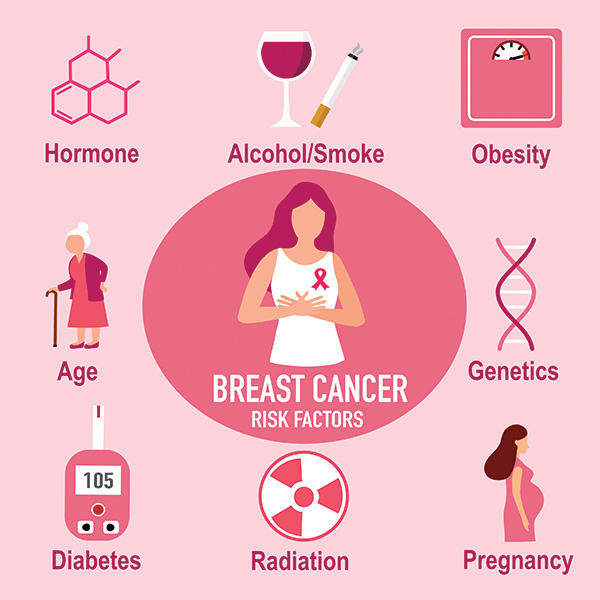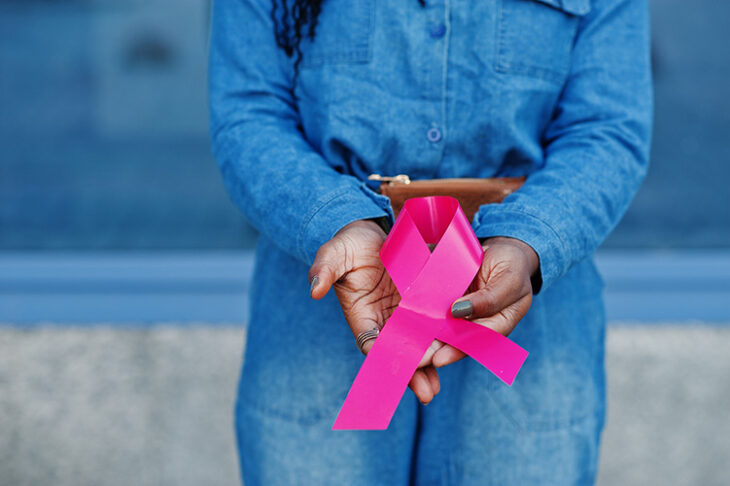According to the National Cancer Institute, female breast cancer is the fourth-leading cause of cancer death in the United States. One in eight women will fight this formidable disease during her lifetime.
Now for the good news: The National Cancer Institute also reports that when detected early, in the localized stage, the five-year survival rate is 98 percent. This makes it especially important to know your risk factors, to recognize potential signs and symptoms and, if you are diagnosed, to be aware of the ever-improving treatment options you have available.
SIGNS AND SYMPTOMS
Breast cancer can manifest in various ways, making early detection crucial. Some signs and symptoms include:
- Breast lump: A painless lump in the breast or underarm can be a telltale sign. Make sure to regularly perform breast self-exams and see your gynecologist regularly to spot any changes.
- Alterations in breast size or shape: Note any inexplicable changes in breast size, shape or contour.
- Nipple changes: Be aware of any nipple discharge (other than breast milk), inverted nipples or changes in nipple appearance.
- Skin changes: Redness, dimpling or thickening of the breast skin, resembling an orange peel, may be indicative of breast cancer.
- Breast pain: While breast pain is rarely a symptom of breast cancer, discuss any persistent discomfort with your doctor.
RISK FACTORS
 Understanding your risk factors can help you be proactive in breast cancer prevention. Some key factors are:
Understanding your risk factors can help you be proactive in breast cancer prevention. Some key factors are:
- Age and gender: While some men — roughly 2,800 annually — are diagnosed with breast cancer, women are at a significantly higher risk. Risk also increases with age, as only 4 percent of American women diagnosed with breast cancer are younger than 40, according to the Susan G. Komen organization.
- Family history: Breast cancer among your family members, especially close relatives like a mother or sister, can increase your risk.
- Inherited gene mutations: Genetic mutations like BRCA1 and BRCA2 can make you more susceptible to breast cancer.
- Personal history: A prior history of breast cancer or certain non-cancerous breast diseases can raise your risk.
- Hormone replacement therapy: Longterm use of HRT can be associated with an increased breast cancer risk.
- Lifestyle factors: Obesity, excessive alcohol consumption, lack of physical activity and smoking elevate your chances of developing breast cancer.
TREATMENT ADVANCES
Survival rates and quality of life for patients are improving all the time thanks to advancements in breast cancer treatment. Here are some notable developments:
- Targeted therapies: Drugs are now targeting specific molecules involved in cancer growth, reducing damage to healthy cells and minimizing side effects.
- Immunotherapy: The beauty of immunotherapy is that it uses the body’s own immune system to fight cancer, offering new hope for certain breast cancer types.
- Precision medicine: Tailoring treatment based on the genetic makeup of the tumor allows for more effective and customized therapies.
- Minimally invasive surgery: Developments like robotic-assisted surgery and breast-conserving surgeries reduce scarring and promote quicker recovery.
- Radiation improvements: Shorter, more precise courses of radiation therapy reduce the impact to healthy tissue.
Breast cancer is a daunting diagnosis, but with ongoing research and an increased emphasis on screenings, women have a better chance of overcoming the disease than ever before. Early detection remains key, so make sure to prioritize regular check-ups and screenings with your healthcare provider.


